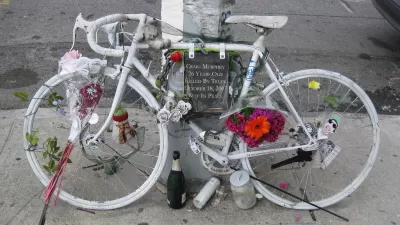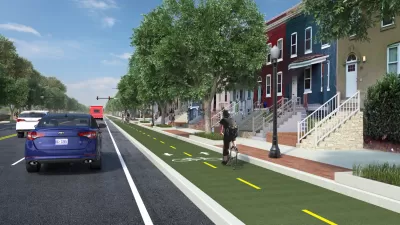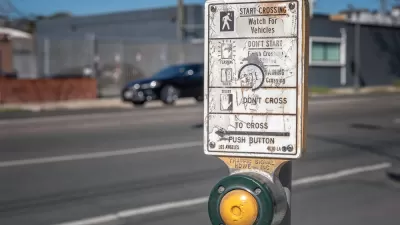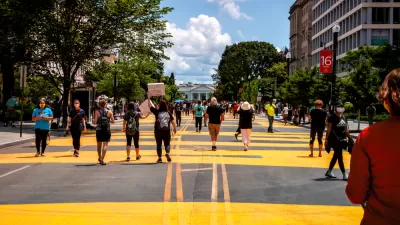The death toll on the streets of Washington, D.C. are unchanged a year after the District launched its Vision Zero initiative.

Martin Di Caro reports: "A year after releasing Vision Zero, a comprehensive plan to eliminate road deaths by 2024, Washington, D.C. officials say they are building momentum in a citywide effort to calm traffic, even though the number of people killed in crashes has remained the same year-on-year."
After an initial announcement by Mayor Muriel Bowser in February 2015, the District rolled out its Vision Zero in December 2016. "More than two dozen city agencies are involved in a multi-faceted approach stressing education, police enforcement and street engineering," adds Di Caro.
The article updates the implementation some of the infrastructure and design investments targeted as key components of the District's Vision Zero initiative, including High-Intensity Activated Crosswalks (HAWKs), improved intersections, road and diets.
A year after the Vision Zero initiative launched, District Department of Transportation officials are urging patience for statistical improvements as agencies have a chance to implement physical improvements and as the public gains more exposure to education campaigns.
FULL STORY: One Year After Launching Vision Zero, D.C. Sees No Reduction In Traffic Fatalities

Study: Maui’s Plan to Convert Vacation Rentals to Long-Term Housing Could Cause Nearly $1 Billion Economic Loss
The plan would reduce visitor accommodation by 25,% resulting in 1,900 jobs lost.

North Texas Transit Leaders Tout Benefits of TOD for Growing Region
At a summit focused on transit-oriented development, policymakers discussed how North Texas’ expanded light rail system can serve as a tool for economic growth.

Why Should We Subsidize Public Transportation?
Many public transit agencies face financial stress due to rising costs, declining fare revenue, and declining subsidies. Transit advocates must provide a strong business case for increasing public transit funding.

How to Make US Trains Faster
Changes to boarding platforms and a switch to electric trains could improve U.S. passenger rail service without the added cost of high-speed rail.

Columbia’s Revitalized ‘Loop’ Is a Hub for Local Entrepreneurs
A focus on small businesses is helping a commercial corridor in Columbia, Missouri thrive.

Invasive Insect Threatens Minnesota’s Ash Forests
The Emerald Ash Borer is a rapidly spreading invasive pest threatening Minnesota’s ash trees, and homeowners are encouraged to plant diverse replacement species, avoid moving ash firewood, and monitor for signs of infestation.
Urban Design for Planners 1: Software Tools
This six-course series explores essential urban design concepts using open source software and equips planners with the tools they need to participate fully in the urban design process.
Planning for Universal Design
Learn the tools for implementing Universal Design in planning regulations.
Ascent Environmental
Borough of Carlisle
Institute for Housing and Urban Development Studies (IHS)
City of Grandview
Harvard GSD Executive Education
Toledo-Lucas County Plan Commissions
Salt Lake City
NYU Wagner Graduate School of Public Service





























